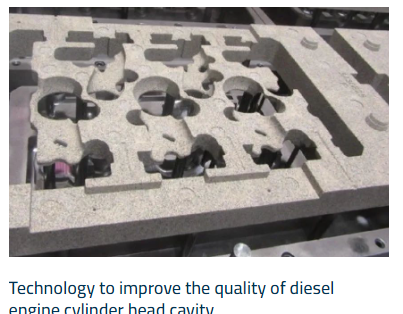Automotive design is centered around engine parts, directly affecting vehicle performance, level of efficiency, and overall service life. A car's engine is its lifeblood, and the individual parts must be able to hold up against the stresses of higher fuel mileage requirements, tighter emissions regulations and, of course, the quest for more power.
Impact on Vehicle Performance
The Ability of a car lays mainly within its own motor segments and strategies. Pistons, crankshafts and camshafts are required to work at higher pressures and temperatures, for longer periods of time ensuring their uninterrupted performance throughout the life of the vehicle. In contrast, the tolerance in current engine pistons can be as low as 0.01 millimeters, yielding an exceptional efficiency of fuel combustion and energy loss.
Fuel efficiency is another key factor where the design of the engine details everything. New materials and technologies allow for stronger and lighter parts to be produced. One example is the weight reduction as used within connecting rods where, according to our experts, in some cases such as titanium connecting rods, mass can be reduced up to 40 percent in comparison to their high-strength steel counterparts, which has a direct effect on fuel efficency.
Improving Ruggedness and Dependability
Long-lasting components are fundamental in the field of automotive engineering. Engine components are rigorously tested to ensure they can survive several thousands of hours of operation in the harshest environments without a hiccup. What this really means (because it is kind of obvious) is that if you place these same components on the surface of an engine that gets far less regular service than what a race engine receives, then you can expect a much longer service life. [On full-scale engines, this can also mean death on your very first run, as the Phantom R&D team can attest to if necessary....] This is where material science is key; with advances in materials such as ceramic matrix composites being applied in the engine's high-wear areas to give these parts a lifespan that can extend beyond that of traditional metal alloys.
It also stretches to maintenance intervals. Due to properly developed engine parts in today's vehicles, vehicles can travel farther between services. Stein says that in combination with top-of-the-line engine parts, synthetic oils can extend your oil-change interval to as much as 10,000 miles (compared to about every 3,000 miles using conventional oils).

Meeting Emission Standards
Global emission regulations are stringent and as a result, engine parts are designed to save the planet. Modern engines are dependent on advanced exhaust systems and emission control technologies, such as selective catalytic reduction. This is why for the most part these systems require exact parts that are built to fit and function flawlessly so that harmful pollutants are greatly diminished.
Engine Part Design and Innovation
When it comes to how far cars can go, new designs and concepts in engine parts are key innovators. An integration between CAD and CFD in computers lets engineers run new design variants without having to test the changes physically. This will not only make the development process faster, but will also lower the cost of prototyping and testing.
Engines of Tomorrow - Trends in Engine Development
Furthering this trend we all know that the auto industry is changing, and often times it seems like a lot is shifting towards hybrids and electrics. Nevertheless, even in such cases, what will ultimately make the engine of interest are the innovative and the design of its engine parts. Efficiently designed components for the engine are also incredibly important for hybrid vehicles, meaning lower parasitic losses provide maximum power with the least drain on the battery, thus aiding the vehicle's battery range as well.
An engine, like the human heart it is sometimes compared to, is a complex beast that works much the same - and engine parts are much more than just things; they are engineered mechanical wonders of the world that effectively determine what a vehicle will turn out to be." These parts will play an even greater role in automotive design as technology advances, and as consumer preferences, regulatory requirements and technological innovations precipitate further change.
